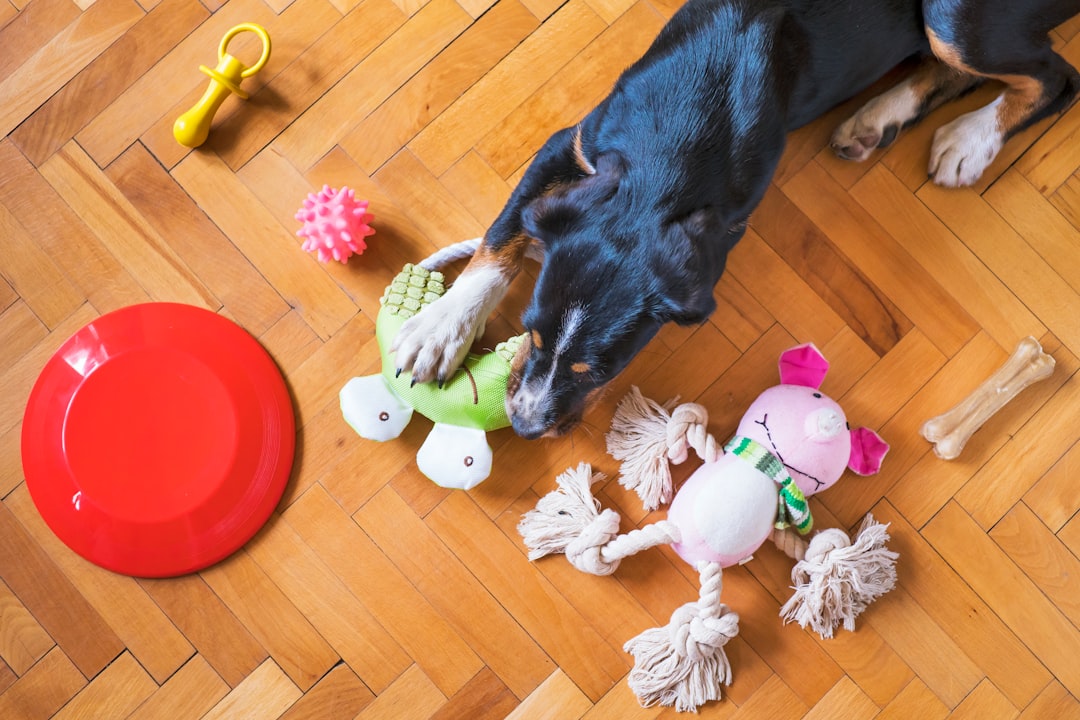- You are here:
- Home »
- Blog »
- Boston Dog Trainer »
- How to Overcome Resource Guarding in Dogs: Techniques, Training, and Prevention
How to Overcome Resource Guarding in Dogs: Techniques, Training, and Prevention
How to Overcome Resource Guarding in Dogs: Techniques, Training, and Prevention
Introduction
Resource guarding is a behavior commonly observed in dogs where they assert ownership over certain items, such as toys, beds, treats, or even humans. This behavior is often rooted in anxiety and can be caused by past experiences or training methods. It is crucial to address resource guarding behavior in dogs to ensure the safety of both dogs and humans.
Resource guarding can manifest in various ways, such as growling, snapping, or even biting when someone approaches the guarded resource. It is important to understand that resource guarding is a natural behavior for dogs, as in the wild, they have to protect their valuable resources like food and shelter. However, in a domestic setting, resource guarding can become a problem and lead to conflicts within the household.
Signs and Symptoms of Resource Guarding
Dogs that exhibit resource guarding behavior may display several signs and symptoms. These can include growling, lip-licking, stiffness in the body, hyper-fixation on an object, and increased attentiveness to other dogs.Resource guarding can manifest towards a variety of items, including food, treats, food bowls, bones, toys, stolen items, space, and even their owner. If left unaddressed, resource guarding can escalate to aggression and pose a risk to humans or other pets. It is also important to note that resource guarding can occur between pets, such as food aggression towards another dog or guarding their owner from other pets.
For example, a dog that resource guards its food may growl or snap if someone approaches its food bowl while eating. Similarly, a dog that resource guards its toys may become tense and growl if someone tries to take the toy away. These behaviors are the dog’s way of protecting what it perceives as its valuable resource.
Techniques to Stop Resource Guarding
There are several techniques and strategies that can be employed to address and stop resource guarding behavior in dogs. One important step is to provide ample resources to reduce competition and the need for guarding. This means ensuring that each dog has its own set of toys, food bowls, and resting places. Additionally, both positive and negative reinforcement can be used to encourage good behavior and eliminate bad behavior and teach cues like “give” and “leave it”. By rewarding the dog for relinquishing an item and teaching them to willingly let go, the tendency to guard can be reduced.
Another technique is to practice trade-ups with the dog. This involves offering the dog a high-value treat or toy in exchange for the item they are guarding. By creating a positive association with giving up the item, the dog can learn that it is beneficial to let go. Gradually, the dog will be more willing to release the item without exhibiting guarding behavior.
Managing the environment is another effective approach. This can involve removing problem items that trigger resource guarding and sequestering dogs during mealtimes to prevent conflict over food. Desensitization and counterconditioning training are also valuable techniques that can help change a dog’s emotional response to the approach and removal of guarded items. By gradually exposing the dog to situations where their possessions are approached or touched, and associating those experiences with positive outcomes, their guarding behavior can be modified.
For example, if a dog resource guards its food bowl, the owner can start by standing a few feet away from the bowl while the dog is eating and tossing a high-value treat towards the bowl. This creates a positive association between the owner’s presence and good things happening. Gradually, the owner can move closer to the bowl while continuing to toss treats, until eventually, they can safely approach the bowl without triggering guarding behavior.
 Professional Dog Training and Resource Guarding
Professional Dog Training and Resource Guarding
In some cases, resource guarding behavior may persist despite interventions, or it may extend to guarding other items or people. When this happens, it is important to seek professional help from certified trainers or behavior consultants. The team at Off Leash K9 Training in Boston is here to help. These professionals can provide guidance and develop a customized treatment plan to address resource guarding behavior effectively. Professional trainers can assist in training both the dog and the people in the household, helping them understand the underlying causes of resource guarding and providing strategies to manage and modify the behavior.
Professional trainers may use techniques such as desensitization and counterconditioning, as well as behavior modification exercises, to address resource guarding. They can also provide guidance on how to properly manage the environment to prevent conflicts and ensure the safety of everyone involved.
It is important to remember that resource guarding behavior can be complex and may require professional intervention. Trainers and behavior consultants have the knowledge and experience to assess the specific situation and develop a tailored plan to address the behavior effectively. Seeking professional help can increase the chances of success and ensure the well-being of both the dog and the humans in the household.
Tips for Preventing Resource Guarding
Preventing resource guarding is an essential aspect of responsible dog ownership. To minimize the likelihood of resource guarding behavior developing, it is important to remove access to guarded items and reward good behavior. Building a dog’s confidence through positive reinforcement and working on strengthening their trust can also help prevent resource guarding. Teaching skills such as “drop it,” “leave it,” and coming when called can promote obedience and reduce resource guarding tendencies. Proactive training exercises, particularly during the puppy stage, can also contribute to preventing resource guarding.
For example, incorporating regular training sessions where the dog learns to give up toys or treats willingly can help prevent the development of resource guarding behavior. By teaching the dog that giving up possessions is positive and rewarding, they are less likely to feel the need to guard their resources in the future.
Consistency is key when preventing resource guarding. It is important to establish consistent rules and boundaries for the dog and ensure that all family members and visitors follow them. This helps create a predictable and stable environment for the dog, reducing the likelihood of resource guarding behavior.
Addressing Resource Guarding Towards Other Animals
Res ource guarding can occur between pets in the same household, leading to potential conflicts. To manage resource guarding between pets, it is advisable to feed them separately and block access to certain areas. Desensitization and counterconditioning training can be used to address dog-directed resource guarding, gradually teaching the dogs to associate the presence of other animals with positive experiences. Seeking help from certified trainers or behavior consultants is crucial to ensure proper guidance and support throughout the training process.
ource guarding can occur between pets in the same household, leading to potential conflicts. To manage resource guarding between pets, it is advisable to feed them separately and block access to certain areas. Desensitization and counterconditioning training can be used to address dog-directed resource guarding, gradually teaching the dogs to associate the presence of other animals with positive experiences. Seeking help from certified trainers or behavior consultants is crucial to ensure proper guidance and support throughout the training process.
For example, if one dog resource guards its food from another dog, feeding them in separate rooms or using barriers to create distance between them can help prevent conflicts. Slowly introducing them to each other’s presence while providing positive reinforcement, such as treats or praise, can help change their association with the other dog’s presence from a threat to a positive experience.
It is important to address resource guarding between pets early on to prevent the behavior from escalating and causing harm. Seeking professional guidance can be particularly beneficial when addressing resource guarding between pets, as it may require more complex training techniques and management strategies.
Conclusion
Resource guarding in dogs is a behavior that should not be ignored, as it can lead to potential conflicts and risks for both dogs and humans. By recognizing the signs, implementing effective techniques, and seeking professional help when necessary, resource guarding can be successfully managed and modified. Remember, it is always important to prioritize the safety and well-being of everyone involved. With patience, consistency, and proper training, dogs can learn to overcome resource guarding behaviors and live harmoniously with their human companions. Contact our trainers and our team to help you with your resource guarding journey!

